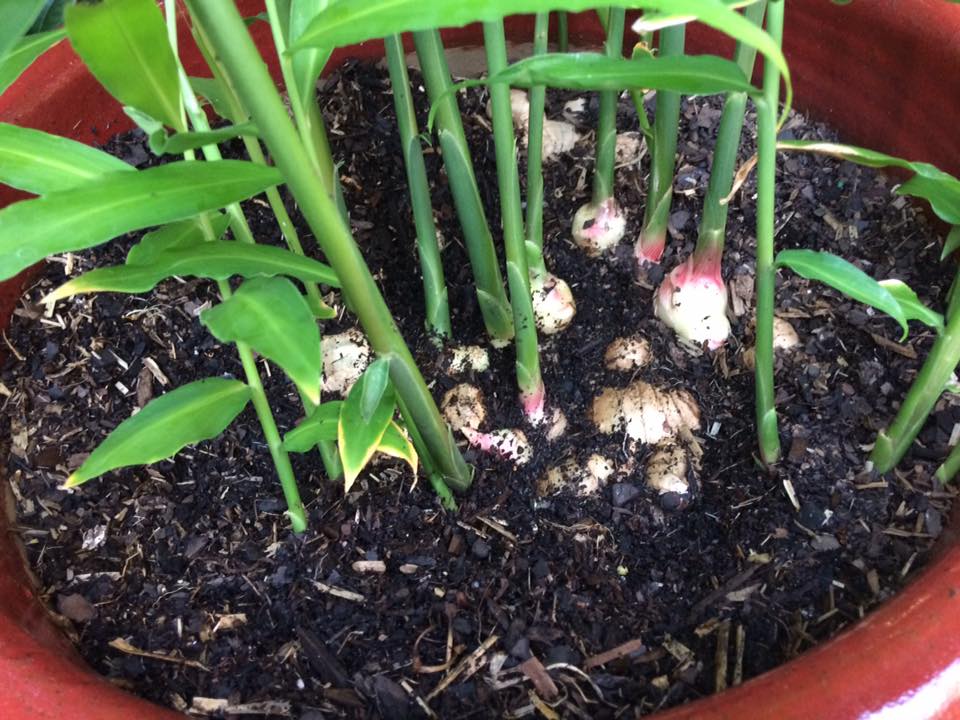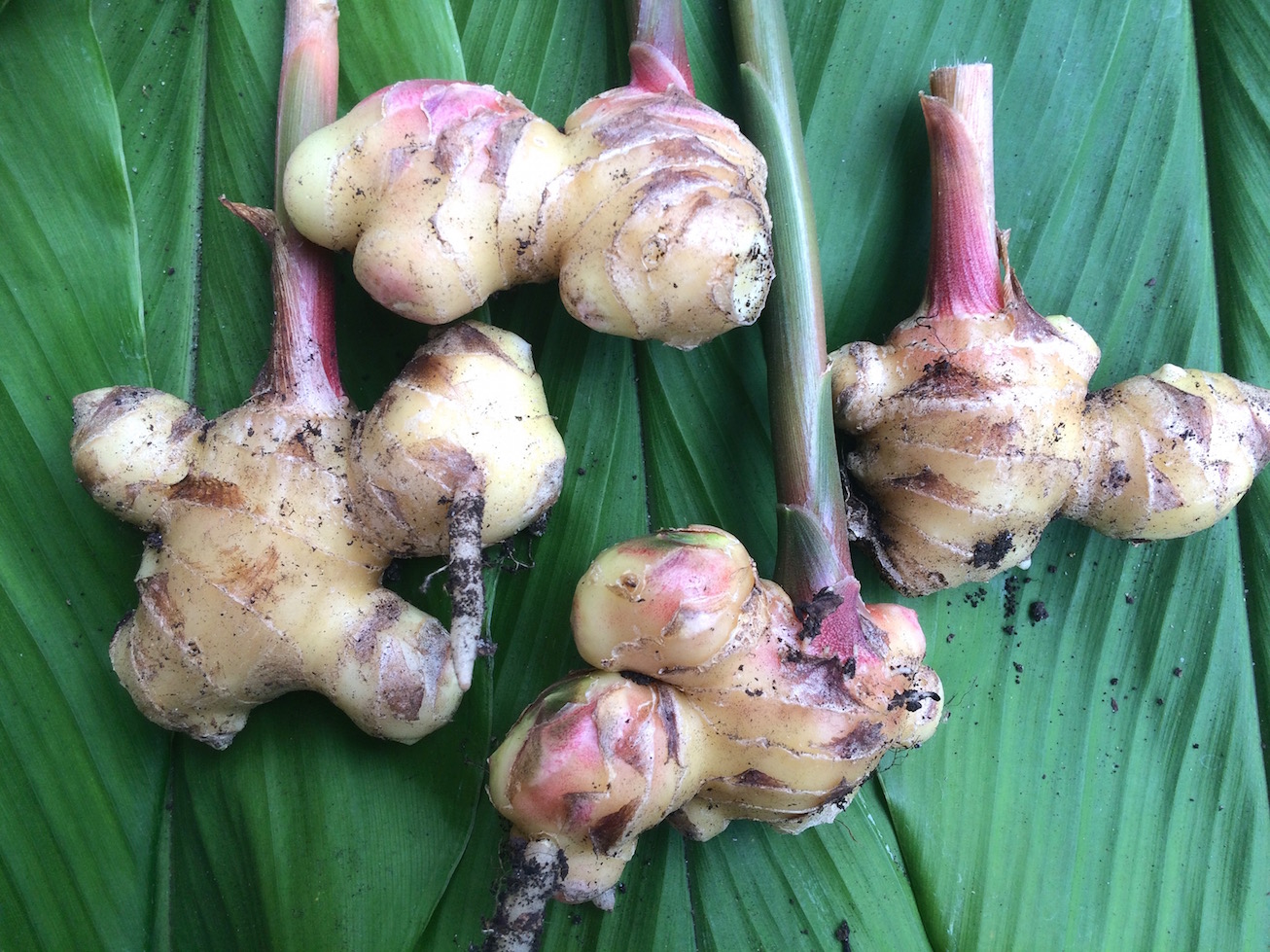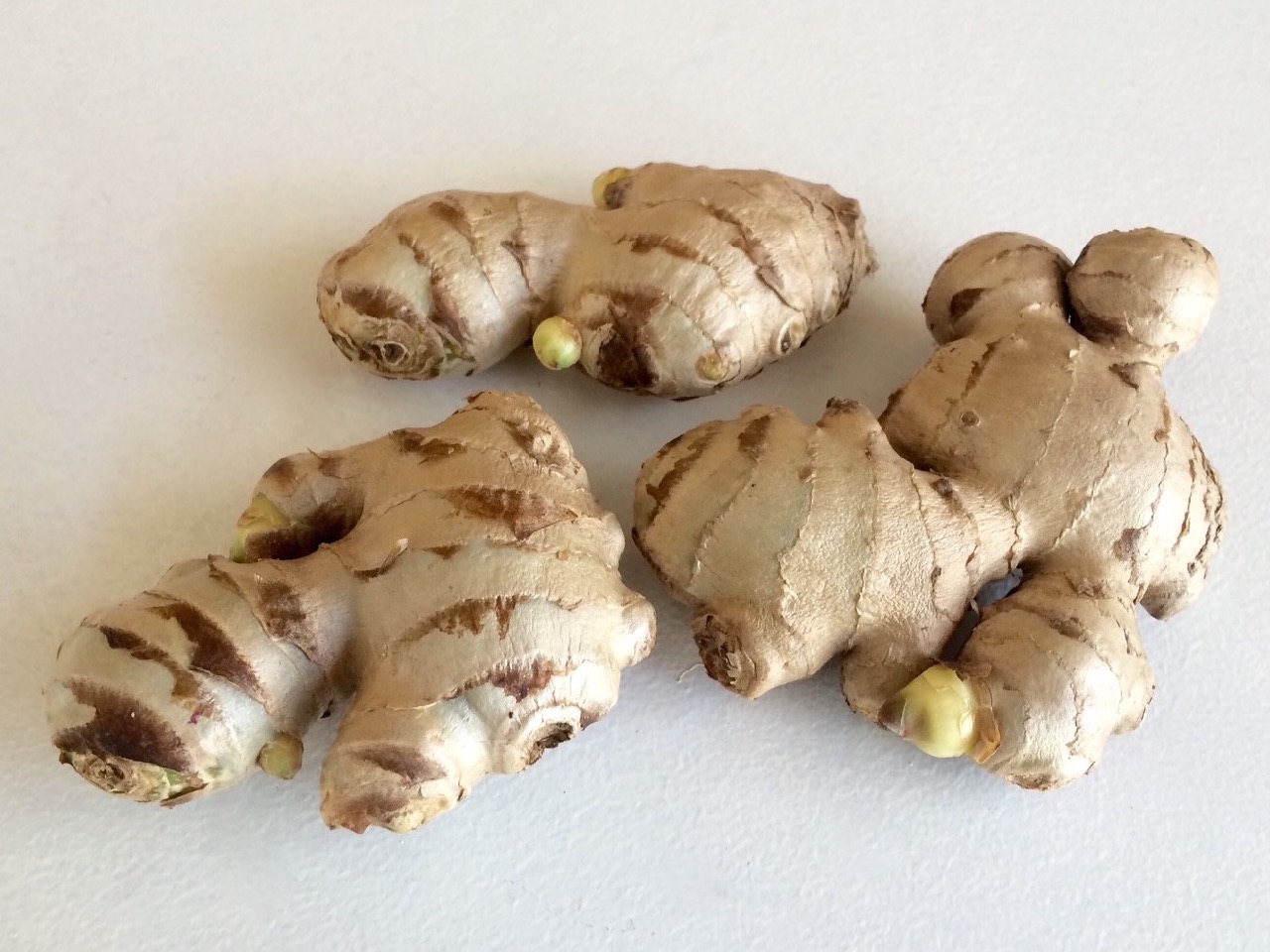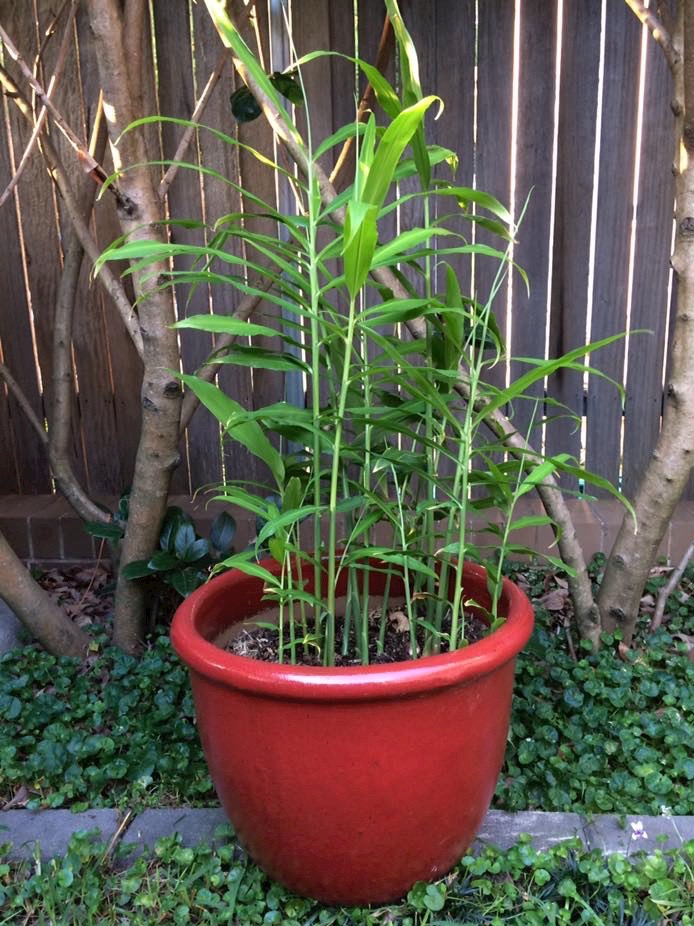
I’ve only discovered in recent years that this warm climate gem can be grown beyond the tropics in warm temperate climates. Ginger is easy to grow at home and is an attractive plant ideal for container gardening.
Just imagine having your very own supply for ginger tea, stir-fries, curries and more.
Description
Growing around one metre high ginger is a perennial herb native to monsoonal forests. There are also a number of ornamental gingers that are not edible.
Get started early in spring
The earlier you start, the more time your rhizomes (technically these are not roots) have to develop so plant them in September or October for the best results. The ideal temperature range for bud development is between 22 and 25 degrees Celcius and within this temperature range they should take around a month to sprout. Growth occurs during the warmer months and the plant is dormant during the cold months. Ginger grows most prolifically in the tropics and sub-tropics of Australia but can be grown successfully in warm temperate areas as well.
Choose rhizomes with lots of ‘eyes’
Purchase young plump healthy rhizomes with lots of visible ‘eyes’ or buds. Ideally select your rhizomes from an organic grocer or farmers market, or online nursery store. If you like you can cut the rhizomes into smaller pieces about 4 to 5 centimetres in length, making sure each has at least two eyes. Allow any cuts to heal for a day or two before planting.
Leave rhizomes to sprout
There are several methods you can use at this stage of the process and you might like to experiment to see what works best for you. Your goal is that you want to your rhizomes to sprout while preventing them from rotting. I like to leave my rhizomes on the kitchen windowsill until they sprout. They shrivel up a little bit but if you start off with healthy ones then it’s fine. If you are having trouble then wait until the weather warms up a bit more. Some people also like to soak them in luke-warm water to stimulate the growth and then plant directly into a breathable medium such as coconut fibre.
Plant in rich, well-drained soil
Prepare your garden bed or container with plenty of compost. When the first leaves have sprouted plant your rhizomes so that the tops are just visible. Ensure the buds are pointing upwards.
Try planting in a container
Ginger thrives in a container and makes an attractive balcony or courtyard plant but make sure it’s at least 30 centimetres deep. Fill with a mixture of half premium organic potting mix and half well-rotted compost.
Provide plenty of sunshine
In temperate areas plants will require full-sun with some light shade, while in the tropics and sub-tropics you’ll need to provide part-shade for your ginger. In cooler areas you can help your plants keep warm by growing them in a black pot to help them retain heat or by growing them in a glasshouse or even indoors.
Be careful with watering at first
Gradually increase your watering as your ginger grows because too much at the beginning can cause it to rot. Once your plant is established keep it well watered, but ensure there is adequate drainage and allow it to dry out in between watering. Reduce water as the leaves begin to yellow.
Protect from the frost
Being a tropical plant ginger is sensitive to frost, harsh sun and strong winds. If you live in a frost-prone area avoid leaving your plants in the ground over winter. In these areas it is best to grow your plants in a pot and move them under shelter during this time.
‘Bandicoot’ harvest from February
If you wish you can start digging up the odd piece of ginger as needed from around February. This is called “bandicooting”. This early ginger will have less intense flavour.

Harvest after 8 months
When the leaves yellow and start to die back, dig carefully around the side of the clump and pull it up. You won’t be able to use all your ginger at once so plan you would like to do with your harvest. Use some fresh, freeze some in four centimetre chunks, make preserves and chutneys and put aside some to re-plant for your next crop.
Try different ways of using your ginger
There are so many ways of using your ginger from chutneys, stir frying, curries and soups, to lollies, beverages, cordials, cakes and even using young rhizomes in salads.
A ginger plant also makes a fantastic and unique gift so why not plant some extra for someone special. I will be!
Read this next:



One thought on “Grow your own ginger”